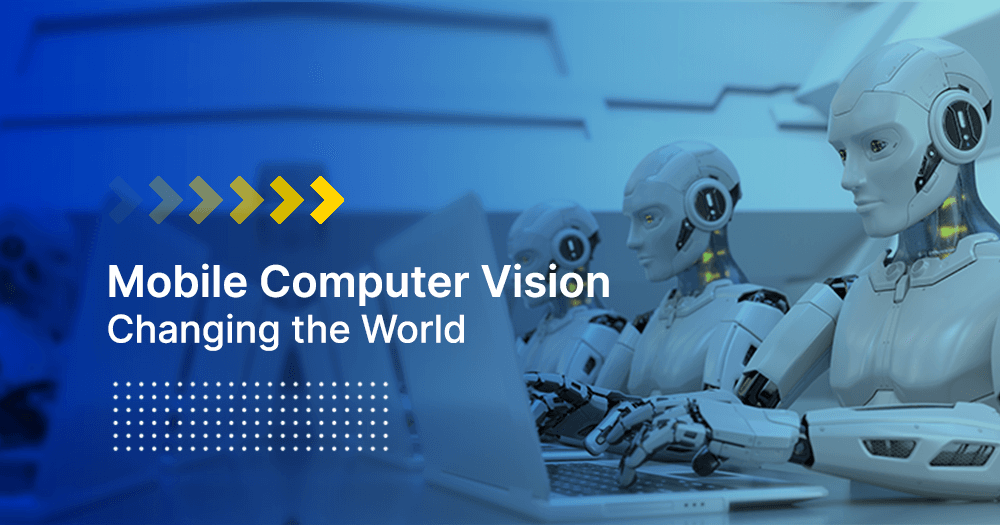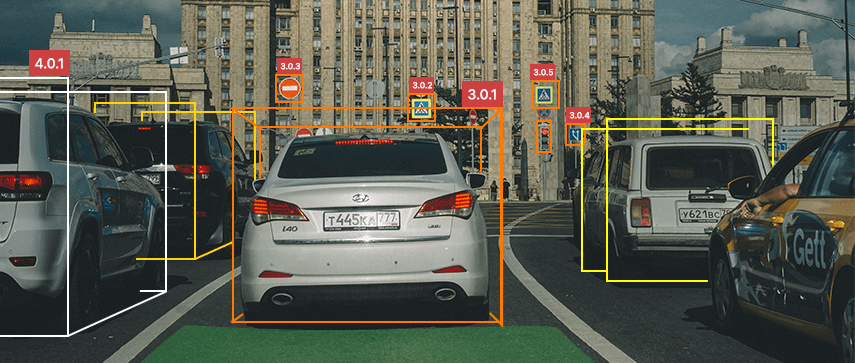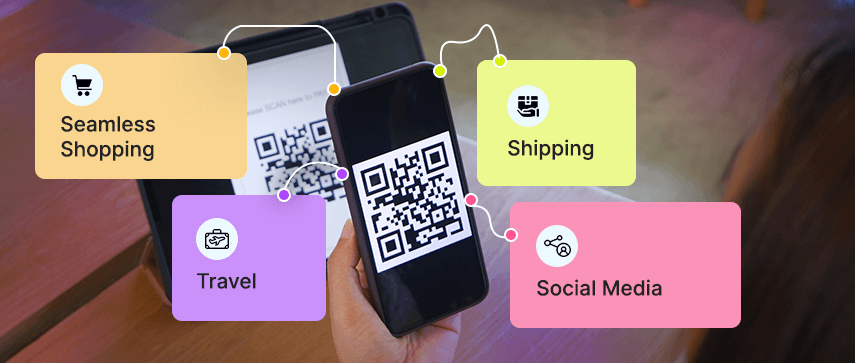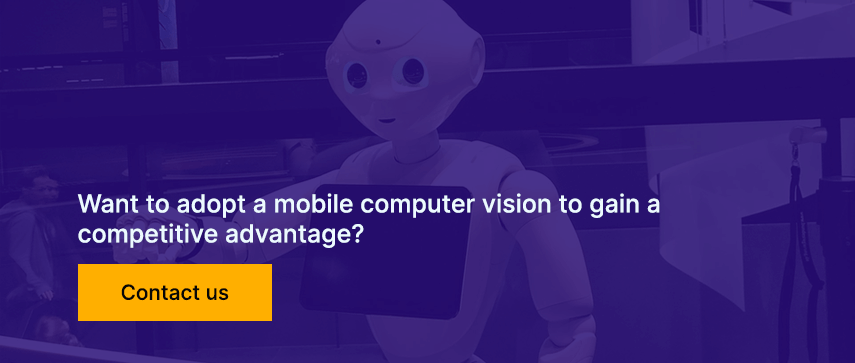Computer vision has made life easier for both customers and businesses. The realm of computer vision seems to be taking a new turn as mobile devices are becoming the new normal amidst COVID-19. Mobile computer vision is becoming increasingly popular globally and is being applied in a wide range of industries. In this post, we’ll delve into the concept of mobile computer vision technology and why it’s making a significant impact on various industries.

What is “Computer Vision”?
Computer vision is a field of study that focuses on developing computer devices to gain a high-level understanding of visual elements, like images or videos. This system is capable of recognizing objects and their characteristics in a two-dimensional image. These characteristics could be textures, shapes, colors, and more.
Computer vision tries to give machines the ability to see and process visual information like objects or images. And the applications of computer vision aren’t restricted to visual identification. It’s used in various areas, like defect detection, intruder detection, screen reading, assembly verification, metrology, bin picking, and code & character reading (OCR).
And What is “Mobile Computer Vision”?
Mobile phones have never been just “phones.” From camera to games, mobiles have always offered more than the standard calling experience. Now, the abilities of mobile phones have taken a new turn.
Nowadays, smartphones come with superior-quality cameras. When integrated with computer vision algorithms, these cameras can be utilized to provide personal and professional services.
A common example is the last-mile delivery process. The procedure of sorting out parcels to deliver them to their final destination is time-consuming and challenging. Logistics and shipping companies resolve this hurdle with computer vision technology. The technology enables them to scan barcodes with their mobile phones, helping them fulfill last-mile delivery in a timely and efficient manner.
The Future of Mobile Computer Vision
Mobile computer vision is one of the hottest trends right now. The camera sensors in mobile devices are continuously improving and coming with the latest technologies. This increasing development of mobile camera technology has made mobile computer vision a realistic concept.
Mobile computer vision offers applications for both personal and professional use. For example, you can click a snap of your meal and have the computer vision to determine your diet and nutrition intake. You can also click a picture of your favorite sneakers and let the mobile vision technology find the nearby stores.
Besides, you can also compile mobile computer vision app development with wearables, like glasses and shirt buttons. This can help people who are visually impaired.
When it comes to professional use, the use of mobile computer vision has been seen largely in the shipping and logistics sector. Mobile vision is transforming the last-mile delivery process.
Using mobile devices, you can scan barcodes anytime and from anywhere without having a barcode machine handy. This makes the entire process quicker and more efficient, especially in the retail industry.
In addition, mobile vision is capable of performing every task that computer vision can do. This includes defect detection, screen reading, metrology, and more. And it won’t be a surprise if mobile devices replace computer-based digital scanning solutions.
Mobile Computer Vision Capabilities
Mobile computer vision allows mobile devices to understand objects, texts, images, and other visuals. Here are some essential capabilities of mobile computer vision app development.

1 Pattern Recognition and Matching
Pattern recognition and matching is the process of automatically recognizing and matching patterns and details in data. Mobile computer vision enables you to utilize pattern recognition in fields like data analysis, image analysis, signal processing, bioinformatics, computer graphics, and information retrieval.
2 Scene Segmentation and Understanding
Computer vision for mobile devices allows you to split a scene into different object components for better understanding. Mainly used in architecture and construction sectors, scene segmentation and understanding are the key applications of mobile computer vision.
3 Barcode
A barcode represents information in the form of black and white vertical stripes and numbers. It is an effective way to store information in a machine-readable form. Mobile computer vision allows you to read printed barcodes and decode the data within seconds.
4 QR Code
A quick response (QR) code is a type of matrix barcode that contains data from a transitory media. It works similar to a barcode. Mobile scanning solutions for business enable you to scan and read QR codes to derive the associated information.
5 Biometrics
We’re all aware of facial and iris recognition locks in mobile devices. Do you know the technology behind these applications? You guessed it right; it’s mobile vision. Mobile computer vision makes mobile devices capable of recognizing and differentiating biometrics like face, eye, and fingerprints.
6 Image De-Noising and Reconstruction
Image de-noising and reconstruction is a method commonly used in forensics and crime analysis. It is used to clear the clutter from an image and reconstruct it to identify its original meaning. Mobile computer vision enables you to suppress noise from a contaminated image and reconstruct it.
7 Human-Machine Interaction
Human-machine interaction refers to the interaction and communication between humans and machines. Mobile vision technology provides you with an interface to interact with and control machines using gestures and voice commands.
8 Natural Language Processing
Natural language processing is an interdisciplinary field that focuses on interactions between computers and human language. Mobile vision takes these capabilities to mobile. Besides, it also paves the way for interaction via sign language and lip-reading.
9 Facial Expression Recognition
Facial expression recognition involves identifying facial expressions based on various pre-defined categories, like fear, anger, excitement, happiness, etc.
10 Speech Recognition
Speech-to-text or speech recognition is a common feature seen in many mobile devices and virtual assistants. Mobile computer vision technology enables this technology on mobile devices.
11 Optical Character Recognition
Optical character recognition (OCR) refers to scanning and recognizing text – handwritten or printed – into machine-encoded text. OCR has a lot of applications in both personal and professional use. With computer vision for mobile devices, you can perform OCR from your mobile phones.
12 Photogrammetry and Remote Sensing
Photogrammetry and remote sensing are used to collect information about objects, including their size and distances, from imagery instead of coming in contact with them. Mobile computer vision enables photogrammetry capabilities that are used widely in mapping and surveying.
13 Stereoscopic Vision and 3D Reconstruction
Mobile scanning solutions for business allow you to capture the dimensions of an object in an image and reconstruct it into a 3D model. Stereoscopic vision and 3D reconstruction are widely used in the automotive, design, and gaming industry.
14 Motion Detection and Tracking
Motion detection and tracking have applications in both personal and professional use. It’s the process of detecting a change in an object’s position relative to its environment or vice versa. Mobile computer vision enables mobile cameras to detect and track motion.

Mobile Computer Vision Technology Use Cases in Different Industries
Mobile Vision isn’t an emerging technology that’s making its way into the market. It’s been out for a while, and various industries are using it on a large scale. Here are some industry-wide applications of mobile computer vision.
Automotive: Automotive manufacturers like Tesla use mobile computer vision to facilitate the autopilot function. Other companies are also offering smart digital scanning solutions that enable features like self-parking and late catering.
Manufacturing: Computer vision-enabled mobile devices are critical for manufacturing companies. A mobile scanning solution allows manufacturers to examine important equipment and ensure predictive maintenance. Mobile vision also enables collaborative robots to detect defects and problems.
Retail: The rise of mobile POS systems has made mobile computer vision a pivotal technology in the retail sector. Stores like Walmart use mobile devices to offer remote checkout services to their customers. Besides, mobile computer vision also helps prevent check out theft and scan errors.
Financial Services: While mobile vision hasn’t really established its presence in the banking and finance industry, Artificial Intelligence has. And slowly, the big players like the Bank of America are adopting mobile computer vision. The primary application of a mobile scanning solution in financial services is fraud detection. It also enables facer recognition in ATMs to prevent theft.
Healthcare: Mobile vision has proven to be really valuable in the healthcare industry. Routine diagnostics is one of the areas that have been automated by mobile vision. Though important, routine diagnostics takes a lot of time and doesn’t add any real value to the treatment. With an enterprise scanning solution, procedures like routine diagnostics can be made faster and simpler.
Agriculture: In agriculture, mobile computer vision allows farmers to analyze soil, evaluate crop yield, count livestock, etc. With sensory & satellite imagery and deep learning, farmers can anticipate the yield before investing.
How is Mobile Computer Vision Changing Customer Experience?
Mobile vision is surely helping businesses become more efficient and technologically competent. But the benefits of mobile vision aren’t limited to companies. Customers are also enjoying the features and advantages of mobile computer vision. Here’s how mobile vision is impacting the customer experience.

Seamless Shopping
Initiatives like Amazon Go have revolutionized the shopping process. Customers no longer need to pick the items and wait in the queue for the billing process. With mobile computer vision, customers can grab what they need, get it scanned from a mobile scanner, and leave the store without coming in contact with the cashier.
Travel
Earlier, travelers had to carry a ton of paperwork – IDs, tickets, passes, and more. With mobile computer vision technology becoming the new normal, the need for physical documents has significantly plunged. Now, travelers can carry copies of the necessary documents and get them scanned from computer vision-enabled mobile scanners.
Shipping
As discussed, mobile vision helps shipping companies optimize their last-mile delivery operations. This, in turn, ensures timely delivery, which improves customer experience. Since customers prioritize fast delivery more than anything, mobile vision is playing a pivotal role in enhancing customer experience.
Social Media
If you use Snapchat, you know what we’re talking about. From dog ears to the latest baby face, all the filters on Snapchat utilize mobile computer vision. And consumers absolutely love it. The same goes for Pinterest. The platform has recently launched Pinterest Lens, which allows you to find ideas based on images you click on your mobile.
Conclusion
As COVID-19 continues to cripple the world, mobile computer vision has emerged as a lifesaver. It offers substantial benefits for both companies and customers, thereby paving the way for a contactless ecosystem. And since COVID-19 is here to stay, mobile computer vision will likely become the new norm across all industries. If your business is struggling during this pandemic, adopt mobile vision technology, and make your operations faster and more efficient.

Author's Bio

Shoeb Ahmad, with an experience of 22 years in Digital World, heads Digital Marketing at Mobisoft Infotech. He has a rich experience in SEM, SEO, Social Media & other verticals of Digital Media. He also has been a consultant for a variety of industries, enterprises & startups. He loves reading & traveling. He often writes on various forums since he believes ‘Knowledge increases by sharing.’


